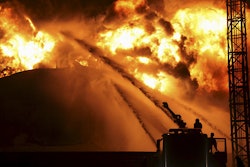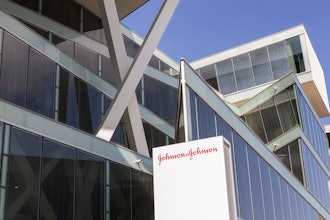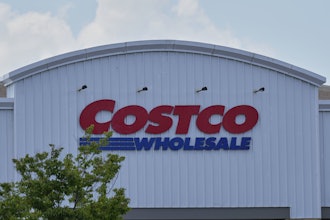www.stratus.com
SERVER VIRTUALIZATION
IN MANUFACTURING
www.stratus.com
White Paper | 2Server Virtualization In Manufacturing
Do’s and Don’t for Your Most Critical Manufacturing Systems
Why Manufacturing is Defined as Business-Critical
Manufacturers are adopting new IT solutions on an
unprecedented scale to meet efficiency, quality and regulatory
compliance goals. And any time that you rely on complex
integrated IT solutions in production environments, service
interruptions quickly become unacceptable.
In applications such as MES, for example, unplanned
downtime results in lost production time. In regulated
industries like pharmaceuticals, loss of data and/or control
can compromise the integrity of a batch record and require
in-process product to be destroyed. Even minor system
interruptions can call into question the value of the IT solution.
While application consolidation has many significant benefits
for MES, significant risks exist when the underlying platform
(including hardware, virtualization software layer and drivers)
is not sufficiently robust. Platform faults could cause a facility-
wide outage, and worse, long recovery time.
Using server clustering to provide a robust platform presents
another challenge. Running a single application clustered on
multiple servers in a non-virtualized environment is difficult
enough. With virtualization, IT personnel have to deal with the
complexity of configuring, testing and maintaining multiple
applications that are clustered on the same platform.
Therefore, evaluating and addressing an application’s availability
requirements is an important consideration before moving to a
virtual environment. Before exploring these and other concerns
in more depth, let’s first review the basic concepts of server
virtualization.
Abstract
While the benefits of
server virtualization at
the corporate data center
are receiving a great deal
of attention, its ability
to address lifecycle
management issues
may make virtualization
even more compelling
at the manufacturing
plant. Along with the advantages, however, come additional
challenges and risks. This paper offers best practices you can
use to benefit from server virtualization today, while avoiding
mistakes that could affect the availability and performance of
business-critical manufacturing IT.
Server Virtualization For the Plant
Many companies are eager to jump into server virtualization,
the practice of using a software layer to let one physical
computing server run multiple virtual machines. Among many
other advantages, server virtualization allows companies to
save money by consolidating a number of applications on
the same physical server.
Virtualization is a time-honored approach in the mainframe
world, but its growing use today involves virtualization on x86
servers. The current surge of virtualization in the enterprise
began with applications deemed less critical, characterized
by lower processing requirements and tolerant of limited
service outages.
Implementing virtualization in manufacturing environments
moves the technology into the business-critical realm.
Manufacturing Execution Systems (MES) and related
automation applications can gain advantages from virtualization
that go beyond even those seen in typical enterprise software
applications — although special concerns apply as well.
www.stratus.com
White Paper | 3Server Virtualization In Manufacturing
Server Virtualization Basics
In a virtualized environment, each virtual machine on a
physical server exists within its own container or partition.
While implementations differ, generally speaking each partition
contains an application (or applications) and an instance of an
operating system known as a guest operating system (OS).
A number of these partitions sit on a software layer called a
hypervisor. The hypervisor is the thin, low-overhead layer that
manages the basic services necessary to host the applications
and their guest operating systems.
Figure 1: A View of Virtualization
Each virtual machine runs a separate instance of an
operating system and application(s), and has access to
a portion of the server’s resources.
The virtual machines on a server may use the same flavor
of operating system, use different releases of the OS or
use entirely different types (e.g., Windows® and Linux®)
of operating systems.
Some approaches use a host operating system below the
hypervisor, but these impose system overhead. More recent
solutions promote “bare metal” performance, which becomes
possible when the hypervisor is implemented directly on the
server hardware.
The market offers a number of commercially available
software-based server virtualization products. The trend is
to support virtualization that includes both Windows and Linux
operating systems. VMware holds the largest market share.
Other companies like Microsoft, Citrix and VirtualIron are
strongly promoting themselves as contenders. In second place,
Microsoft provides solutions for the Windows OS, and is working
to extend support to the Linux OS. In addition, Microsoft and
VMware have announced initiatives that would allow their
virtualization solutions to work together, which holds promise
for standardization.
Why Virtualize?
Reducing the number of physical servers tends to be the initial
reason behind a decision to virtualize. Server consolidation is
only the first of many potential advantages, especially consider-
ing the distinct characteristics of manufacturing IT solutions.
Server Consolidation
Many applications in the enterprise require as little as 5-10
percent of a server’s capacity. Companies are opting to
consolidate a number of these applications on a single physical
server, while planning capacity for growth in the total workload.
At manufacturing plants, physical space tends to be especially
tight. Facilities may or may not have computer rooms, so IT
systems often have to compete for space with other kinds of
equipment. Server consolidation can be especially beneficial
at the plant level for these reasons.
Figure 2: Server Consolidation Example at the Plant Level
More efficient use of resources through server consolidation
can bring savings in hardware-related costs and reduce
environmental expenses as well: space, power and cooling.
Single x86 Server
Virtual
Machine 1
Virtual
Machine 2
Virtualization Layer
Virtual
Machine 3
Legacy
App.
OS
SCADA
OS
Oracle
DB
OS
Virtualization Layer
VM1 VM2 VM3
Server 3Server 1
Server 2
Before Virtualization After Virtualization
Multiple x86 servers
running a single app
Single x86 server running
multiple VMs, apps, OSs
Oracle
DB
OS
SCADA
OS
Legacy
App
OS
Oracle
DB
OS
SCADA
OS
Legacy
App
OS
www.stratus.com
White Paper | 4Server Virtualization In Manufacturing
Lifecycle Management
Compared with typical enterprise applications, MES and
associated applications are distinguished by the need for
long lifecycles. Lifecycles of seven years and up are common
in the industry. After the IT solution is in production, companies
want to ensure stability and reduce risk by avoiding changes
to the software application, the operating system and the
server hardware.
Achieving this objective becomes challenging because
vendors often do not support the original operating system
version throughout your desired lifecycle. This means you have
to seek out extended support and pay a premium. Moreover,
most server hardware is obsolete after three or four years.
Virtualization allows you to abstract the application and OS
away from the server hardware. You can effectively extend
the lifecycle of your application as a result. The ability of a
hypervisor to support older guest operating systems allows you
to upgrade the hardware platform without affecting applications
or their operating systems. A related benefit is that the ability
to upgrade server hardware eliminates the need to stock
hard-to-obtain components required to maintain older
computer servers.
Capabilities that virtualization can enable over the extended
lifecycles of MES and related applications include:
• Speed and ease of provisioning. Server virtualization allows
you to create a standard virtual machine — consisting of
software files that include the application and an operating
system — that can be copied onto a server in a matter of
minutes when additional capacity is required, or when you
need to distribute an identical application configuration
to different plants. The virtual machine can be qualified
and tested in advance to ensure it will work as expected.
Besides the obvious implications for system stability in
regulated industries such as life sciences, using a
pre-validated virtual machine may eliminate platform
qualification testing that would be required to install
and validate new server hardware.
• Hardware and capacity upgrades. When more
processing power or storage capacity is needed,
virtualization can similarly let you move the virtual machine
to newer hardware with no change to the application or
operating system. You are not locked into older hardware.
• Failover and disaster recovery. A virtual machine’s
image — including configuration state, disk state and
so on — residing on one physical server can also be
periodically replicated to another physical server for backup
or fast restart. Some virtualization software also allows for
point-in-time rollbacks. Useful when data corruption has
occurred, rollback lets an administrator revert the virtual
machine to an earlier known good state.
• Application development. Taking as little as minutes to
deploy, virtual machines effectively isolate each application
developer in his or her own partition. Other developers are
unaffected if a developer crashes the test application or
guest operating system.
• Upgrades without downtime. A capability known as live
migration allows for planned hardware and operating
system upgrades (in cases where the operating system is
not visible to the application) with virtually no interruption
to the application and little perceived impact by users.
Note that the operating system that can be upgraded is
at the host OS/hypervisor layer; guest operating systems
cannot be upgraded online.
Live migration works by copying the system state iteratively
while the application continues to run. Shortly before a
final copy of the virtual machine is ready for migration,
only a brief application blackout (perhaps milliseconds)
is necessary to synchronize the second virtual machine
with the original.
Ahead: True Utility Computing
As virtualization technology advances, users as well as vendors
envision utility computing as the goal. People want pools of
servers that not only run multiple applications, but also enable
dynamic and fluid use of resources. In the future, automated
management capabilities — such as application-sensitive
monitoring and intelligent policy making — will be necessary
to bring this flexibility to the mainstream.
www.stratus.com
White Paper | 5Server Virtualization In Manufacturing
Such utility computing will feature the self-management and policy making necessary to reduce requirements for IT labor and
expertise. In addition, it will reduce the chance of operator error that industry experts cite as a leading cause of downtime.
Figure 3: Utility Computing Scenario
True utility computing enables resource sharing and dynamic resource allocation based
on user-specified criteria, such as time of day and incremental capacity needs.
Figure 4: From Server Virtualization to Utility Computing
Today taking advantage of everything that virtualization has to offer still requires the knowledge of, and management by, skilled IT
professionals. And “putting all your eggs in one basket” can be a significant concern unless the underlying platform technology
has the necessary robustness.
TODAY TOMORROW
• Server virtualization is the focus
• Requirement for IT expertise
• Management and monitoring still developing
- Ongoing IT administration is required
- Policy making is not automated
• Vendors have not implemented virtualization standard
• Exposure to single point of failure at virtualization
code layer and the server hardware
• Utility computing is the focus
• Simpler deployment, use will make benefits more
broadly accessible
• Management and monitoring come of age
- Self-management
- Policy making can be automated
• Virtualization standards will increase ease of
deployment, reduce risk
• Single point of failure at virtualization layer is
overcome by deploying in a fault-tolerant environment
• Robust fault-tolerant hardware eliminates single points
of failure on the virtualization server platform
True Utility Computing
Multiple
Applications
Multiple
Operating Systems
Shared Resources
• Storage
• Centralized
Applications
Virtualization Layer
X86 Server
Pool
SCADA
OS 1 OS 2 OS 3 OS 4
Legacy
App
MES Historian …
…
www.stratus.com
White Paper | 6Server Virtualization In Manufacturing
Best Practices for Your
Business-Critical Applications
The risk and cost of service interruptions become higher as
manufacturing applications become more powerful, integrated
and relied upon by larger groups of workers. Employing best
practices can help you achieve the advantages you seek from
virtualization today, without compromising the availability and
performance of your manufacturing application.
Know Your Application
Begin by characterizing your software application and its work-
load correctly. Which resources does your application consume?
How much? When? How much headroom do you need for peak
times and temporary surges in demand? In the event of perfor-
mance degradation, the application could become unavailable
and provide poor response time to users or processes.
Also make sure to conduct an appropriate risk assessment.
Even if you are starting with non-critical applications, the server
on which you are consolidating them often becomes essential
when it drives numerous applications. In addition, not every
application is a good candidate for virtualization. Typical
examples are I/O-heavy applications and performance-sensitive
environments that are not easily characterized.
Understand Tradeoffs
Because virtual servers are easy to set up and don’t require
the same management approval as hardware purchases, trade
press articles report that some companies are experiencing
“virtual server sprawl.”
Expect some performance penalty as well; how much depends
on your application and the virtualization technology you use.
What’s more, maximizing application availability and perfor-
mance on a virtual machine requires considerable skill. And
you need to understand how virtualization will affect your
software license fees.
Seek Enterprise-Strength Technology
Remember that the virtualization layer has the potential to be
a single point of failure for all of the virtual machines it supports.
One rule of thumb: Software reliability increases as the amount
of code and its complexity decrease.
Look for virtualization software that is small, compact,
and controlled — as appliance-like in nature as possible.
Virtualization and availability solutions that are simple to
configure and maintain provide crucial advantages not only
by reducing operating cost, but also by significantly reducing
your exposure to downtime as a result of operational errors.
Plan for Business Continuity
Reliable availability and performance become more important
the more that you depend on an IT resource, and the more that
resource is integrated with other systems. To mitigate the risk
of plant operations being interrupted, institute backup and
disaster recovery measures for the physical servers that run
your virtual machines.
Simplify With Robust Hardware
Virtualization subtracts physical complexity but adds equally real
complexity in a virtual dimension. Without proper planning, this
can be an issue because IT skills are in short supply at the
average manufacturing facility.
Clustering multiple servers is one technique for achieving high
availability. Implementing virtualization on a server cluster adds
another layer to deploying and administering a cluster, on top
of the ongoing attention from IT staff that is already necessary.
For instance, a server must be running to migrate its workload
to another member of the cluster. Therefore when a double-bit
memory fault causes a server to crash, its workload cannot
be transferred, data will probably be lost and a reboot will
be necessary. And with clustering, you can expect to incur
performance overhead in any case.
Server hardware or virtualization software vendors may claim
they achieve high availability by predicting hardware faults and
by enabling live migration of applications to backup servers;
they may also assert that applications can be quickly restarted
on another server. Ask which hardware faults can be predicted
enough in advance to support a live migration; what percentage
of the hardware is covered? In the case of a full restart, what
is the worst-case fault detection and restart time? Is the
management software making fail-over decisions robust,
or for that matter, running on a robust platform?
www.stratus.com
White Paper | 7Server Virtualization In Manufacturing
For simplicity’s sake, consider a fault-tolerant server that
automatically protects reliability and availability without
requiring changes to your business-critical application. This
approach uses redundant components while appearing as a
single server to virtualization and application software. Ideally,
the emphasis should be on preventing downtime and data loss
instead of simply on quick recovery.
Don’t Let I/O Sink the Ship
Incompatibilities related to I/O interfaces are a known cause
of system instability and performance problems. Establish that
I/O devices and drivers are compatible with the virtualization
technology you plan to use. Be ready, willing and able to resolve
incompatibilities up front if you need to use legacy or proprietary
I/O cards to access specialized plant equipment networks, as is
common with supervisory control and data acquisition (SCADA).
Don’t Go It Alone
Virtualizing in a manner that promotes the availability
and performance of business-critical applications requires
considerable expertise. Today, this goal is not realistic
without a knowledgeable staff and/or a trusted professional
services provider.
It is easy to make mistakes when doling out resources to virtual
servers, for example. While allocating disk and memory among
virtual machines is rather straightforward and fine-grained,
CPU and network resources are another story. An incorrect
assumption will quickly drag down a CPU- or network-intensive
environment.
Conclusion
As server virtualization technology matures, it is becoming
suitable for the much more exacting demands of business-
critical manufacturing applications. Server virtualization can
be a boon for managing the lifecycles of the many applications
that make up an integrated MES environment and other critical
manufacturing applications— with a few cautions. You can
gain new capabilities and reduce costs, as long as you choose
appropriate technology and plan properly.
About Stratus
Stratus Technologies is the leading provider of infrastructure-
based solutions that keep your applications running
continuously in today’s always-on world.
Stratus always-on solutions can be rapidly deployed without
changes to your applications. Our platform solutions provide
end-to-end operational support with integrated hardware,
software and services. Our software solutions are designed
to provide always-on capabilities to applications running in
your chosen environment – physical, virtualized or cloud. Our
approach and our people enable us to identify problems that
others miss and prevent application downtime before it occurs.
Multiple layers of proactive diagnostic, monitoring and self-
correcting services are backed by a global team of engineers
who provide immediate support no matter where in the world
your system is located.
If always-on is an application requirement, Stratus Technologies
has a solution that fits.
Specifications and descriptions are summary in nature and subject to change without notice.
Stratus and the Stratus Technologies logo are trademarks or registered trademarks of Stratus Technologies Bermuda Ltd.
All other marks are the property of their respective owners. ©2013 Stratus Technologies Bermuda Ltd. All rights reserved. 131212
Server Virtualization in Manufacturing
While the benefits of server virtualization at the corporate data center are receiving a great deal of attention, its ability to address lifecycle management issues may make virtualization even more compelling at the manufacturing plant. Along with the advantages, however, come additional challenges and risks. This paper offers best practices you can use to benefit from server virtualization today, while avoiding mistakes that could affect the availability and performance of business-critical manufacturing IT.
Latest in Home
ABB to Invest $110 Million in 4 U.S. Plants
September 17, 2025
Nvidia CEO Huang Says He's Disappointed by China Chip Curbs
September 17, 2025



















